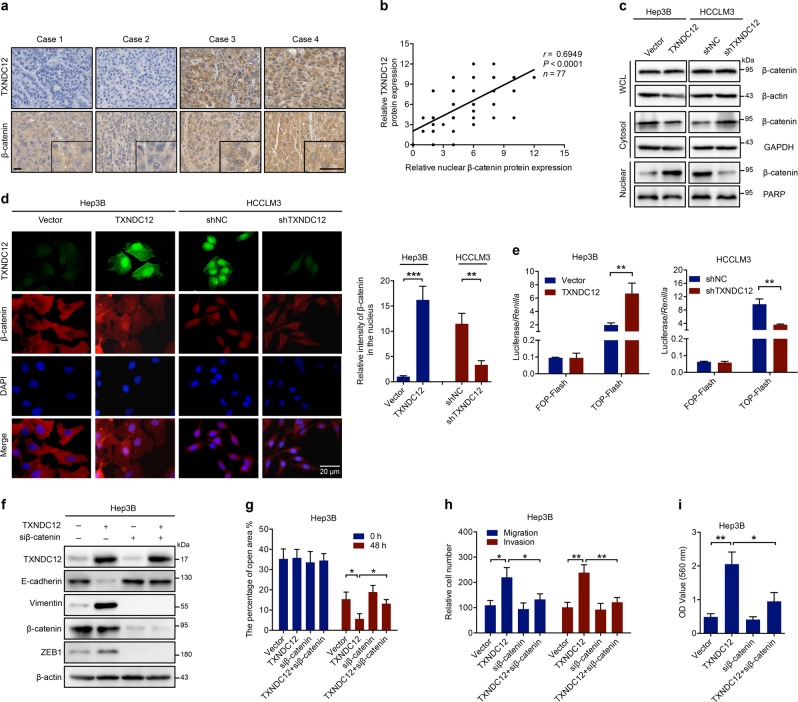Fig. 4.
TXNDC12 upregulates ZEB1 through activation of β-catenin. a Representative immunohistochemical staining of TXNDC12 and β-catenin in human HCC tissues; scale bars: 20 μm (left), 20 μm (right). b Correlation analysis between TXNDC12 and nuclear β-catenin expression in liver tumor tissues from patients with HCC (n = 77). c β-Catenin expression in whole-cell lysates and the cytoplasmic, and nuclear fractions, as detected by immunoblot analysis. d β-Catenin expression in the indicated cells, as detected by an immunofluorescence assay. The merged images show overlays of β-catenin (red) and nuclear staining by DAPI (blue); scale bar: 20 mm. e TOP-Flash/FOP-Flash assay showing β-catenin activity in the indicated HCC cells. f Relative expression levels of TXNDC12, E-cadherin, Vimentin, β-catenin, and ZEB1 in the indicated cells treated with or without siβ-catenin. g Wound healing migration assays performed with the indicated HCC cells treated with or without siβ-catenin. The data are the means ± SDs and are representative of three independent experiments. h Transwell migration and Matrigel invasion assays performed with the indicated HCC cells treated with or without siβ-catenin. The data are the means ± SDs and are representative of three independent experiments. i Representative data from the cell adhesion assay performed with the indicated HCC cells treated with or without siβ-catenin. The data are the means ± SDs and are representative of three independent experiments. *P < 0.05; **P < 0.01

